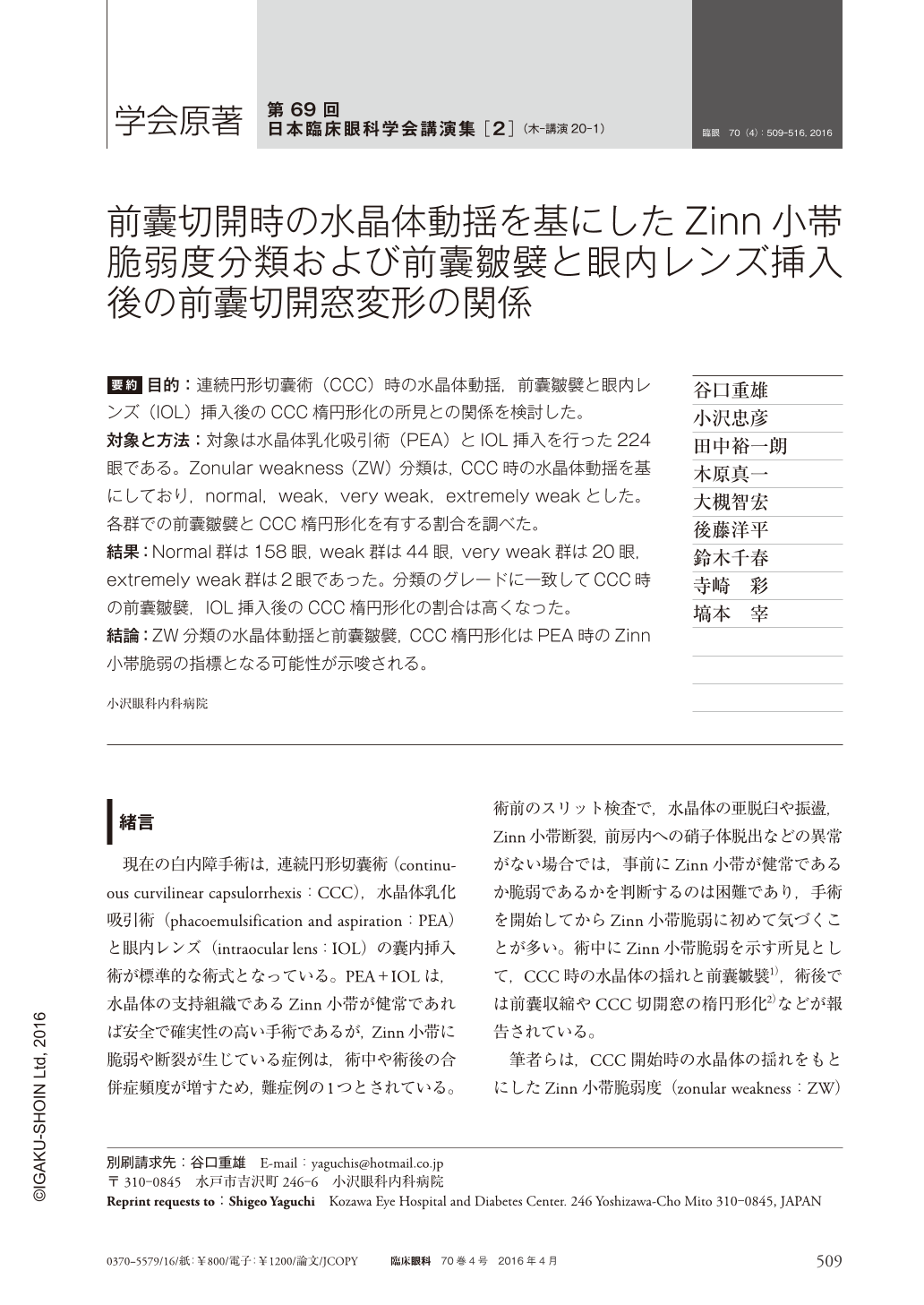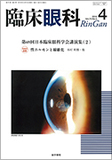Japanese
English
- 有料閲覧
- Abstract 文献概要
- 1ページ目 Look Inside
- 参考文献 Reference
要約 目的:連続円形切囊術(CCC)時の水晶体動揺,前囊皺襞と眼内レンズ(IOL)挿入後のCCC楕円形化の所見との関係を検討した。
対象と方法:対象は水晶体乳化吸引術(PEA)とIOL挿入を行った224眼である。Zonular weakness(ZW)分類は,CCC時の水晶体動揺を基にしており,normal,weak,very weak,extremely weakとした。各群での前囊皺襞とCCC楕円形化を有する割合を調べた。
結果:Normal群は158眼,weak群は44眼,very weak群は20眼,extremely weak群は2眼であった。分類のグレードに一致してCCC時の前囊皺襞,IOL挿入後のCCC楕円形化の割合は高くなった。
結論:ZW分類の水晶体動揺と前囊皺襞,CCC楕円形化はPEA時のZinn小帯脆弱の指標となる可能性が示唆される。
Abstract Purpose: To report the correlation between lens movement during continuous curvilinear capsulorrhexis(CCC)and the findings of the anterior capsule striae during CCC and capsule ovaling after intraocular lens(IOL)implantation.
Material and methods: This study was made 224 eyes that underwent phacoemulsification(PEA)and IOL implantation. We classified the zonular weakness into 4 grade based on lens movement during CCC:grade normal(N), weak(W), very weak(VW), and extremely weak(EW). We examined the presence of anterior capsule striae and capsulprhexis ovaling in each grade.
Results: We classified 158 eyes as grade N, 44 eyes as grade W, 20 eyes as grade VW, and 2 eyes and grade EW. The finding of anterior capsule striae and capsulorhexis ovaling was more frequent as the zonular weakened.
Conclusion: There is a possibility that lens movement during CCC, anterior capsule striae and capsulprhexis ovaling may be useful signs of zonular weakness.

Copyright © 2016, Igaku-Shoin Ltd. All rights reserved.


